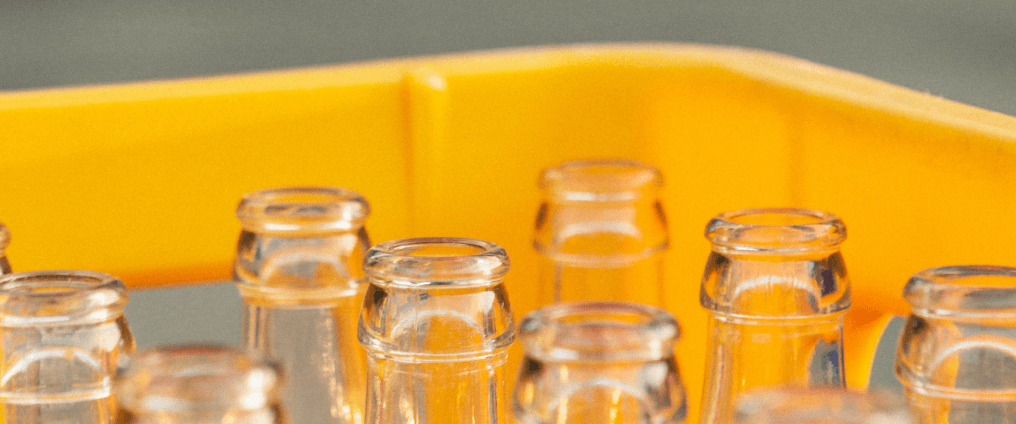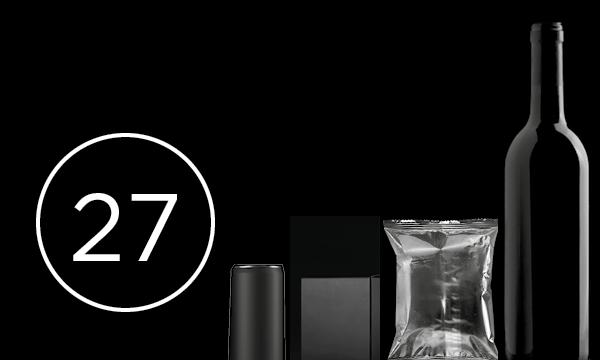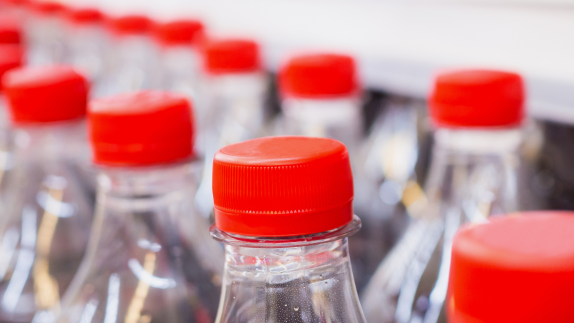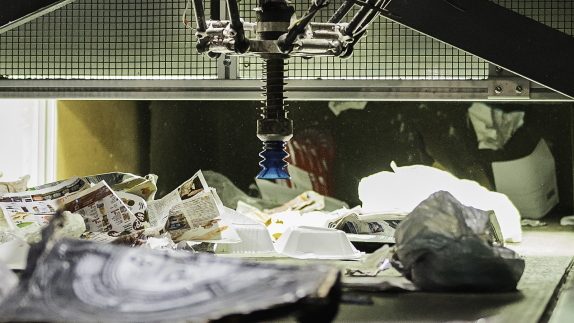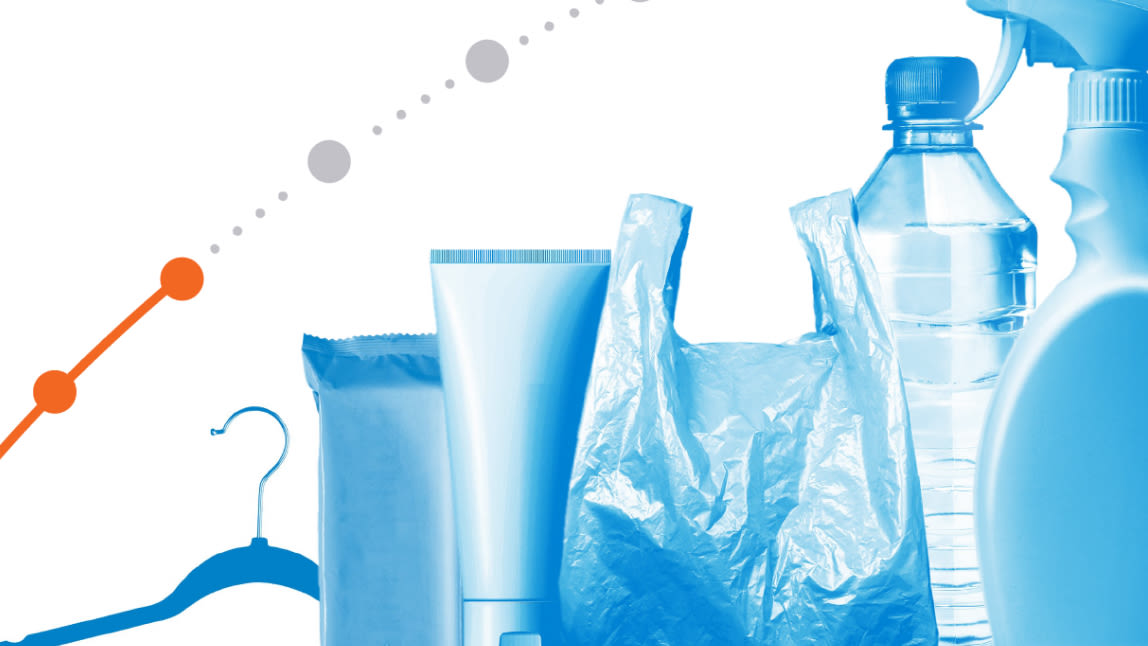Coca-Cola’s Universal Bottle is a reusable plastic (PET) bottle which can be used across multiple soda brands in Latin America. When a consumer finishes a drink, they can return the bottle to the point-of-sale where the producer collects empty bottles to be refilled and reused. On average, these bottles are reused up to 25 more times, reducing overall plastic use by 90%. Introduced by Coca-Cola Company and its Bottling Partners in 2018, it’s their fastest growing packaging format and is now being scaled to other continents.
Why it’s an example of the circular economy
A plastic bottle washed up on a distant beach has become the iconic symbol of a plastic packaging system that is seriously unwell.
In 2017, a million bottles were bought every minute across the world, and even though a significant proportion of PET bottles are collected and recycled, most are thrown away after one use. Addressing this tsunami of single-use plastic requires much more than better material recycling.
The Universal Bottle is an example of ‘upstream innovation’ - tracing a problem back to its root cause and tackling it there. It means that rather than just focusing on how to deal with recoverable material turning into waste, we work to keep that packaging in use for as long as possible.
How it works
Consumers return empty bottles to retailers who store them and then give them back to Coca-Cola upon delivery of a new order. Coca-Cola takes the multi-branded mix of bottles back to a bottling facility where paper labels are washed off. Bottles are then cleaned, refilled, and rebranded with a fresh label.
Consumers pay indirect deposits on bottles by receiving a discount on their next purchase when they return an empty bottle to a store.
Business and consumer benefits
The use of a Universal Bottle avoids the production of billions of plastic bottles across Latin America every year. In Brazil alone, it meant Coca-Cola produced 1.8 billion fewer bottles in 2019.
Compared to single use PET bottles, greenhouse gas emissions are reduced by 47%. Even with washing factored in, water consumption is reduced by 45% - water is a major consideration in large cities like Sao Paulo which has suffered from serious droughts in the last decade.
Lower prices combined with the reward system for returned bottles drives consumer loyalty, resulting in a return rate above 90% and a 15% higher likelihood of repurchase.
Logistics and storage are simplified with a single bottle design across brands so Coca-Cola can cut costs and improve efficiency, whilst providing more flexibility to consumers to choose their preferred beverage.
From idea to reality
In 2018, The Coca-Cola Company published their World Without Waste vision, with a simple focus of making the world’s packaging waste problem a thing of the past.
Later that year, the company joined the Foundation's Global Commitment, at the same time declaring for the first time in history their ‘plastic footprint’. The company reaffirmed the targets set out in their vision including making 100% of its packaging recyclable by 2025, using at least 50% recycled material in their packaging by 2030 and collecting and recycling a bottle or can for each one they sell by 2030. Currently, on average, 43% of PET bottles in Latin America are collected and recycled and Coca-Cola´s PET bottles in the region are made using 25% recycled resin.
Having a global vision and targets in place unlocked investment within the company to innovate infrastructure, products and packaging. The president of the Latin America operation at that time, Alfredo Rivera, saw an opportunity in his region, and launched an innovation challenge with a team of 10 people from across the continent, supported by a USD 25 million investment. Team members were taken off normal duties and given almost a year to dedicate themselves to the intensive design process.
The final product blended ideas and experience from Coca-Cola’s different markets such as Chile’s refillable bottles and Brazil’s paper-based labelling technology.
Marketing, finance, commercial quality, and other business areas were also involved to ensure acceptance across the organisation. Critically, the company's bottling partners, who manufacture, package, merchandise and distribute the finished branded drinks to customers and vending partners, were brought in early to understand their specific needs, and invest in the infrastructure changes required to accommodate the new Universal Bottle.
External consultants also brought an expert outside perspective into the innovation process. Triciclos, a Latin American social enterprise focused on designing and implementing solutions to eliminate the concept of waste, provided an independent assessment on the life cycle analysis of the new product system.
Internal and external stakeholders collaborating towards a common goal is an essential part of all successful circular economycircular economyA systems solution framework that tackles global challenges like climate change, biodiversity loss, waste, and pollution. It is based on three principles, driven by design: eliminate waste and pollution, circulate products and materials (at their highest value), and regenerate nature. projects.
What next?
In November 2020, Coca-Cola Beverages South Africa (CCBSA) was the first Coca-Cola bottling partner outside of Latin America to introduce the Universal Bottle into its market.
The returnable bottle is now available in three provinces in South Africa at a recommended cost of 12 Rand (USD 0.79) excluding a refund of 9 Rand (USD 0.59). This compares to a regular single use bottle which costs 23 Rand (USD 1.52).
Coca-Cola Latin America is continuing to invest in and expand the “Universal Bottle” across more markets and channels. The bottle is already being used across the company’s sparkling and still portfolios, including water brands in some markets. One additional future evolution of the Universal Bottle expansion responds to consumers who may not have their empty bottle with them when they visit a retail store. In the future, these consumers will be able to scan their empty bottle at home on their smartphone, and recoup the deposit or discount by presenting the virtual bottle at the store. The consumer can then return the bottle at their convenience.
